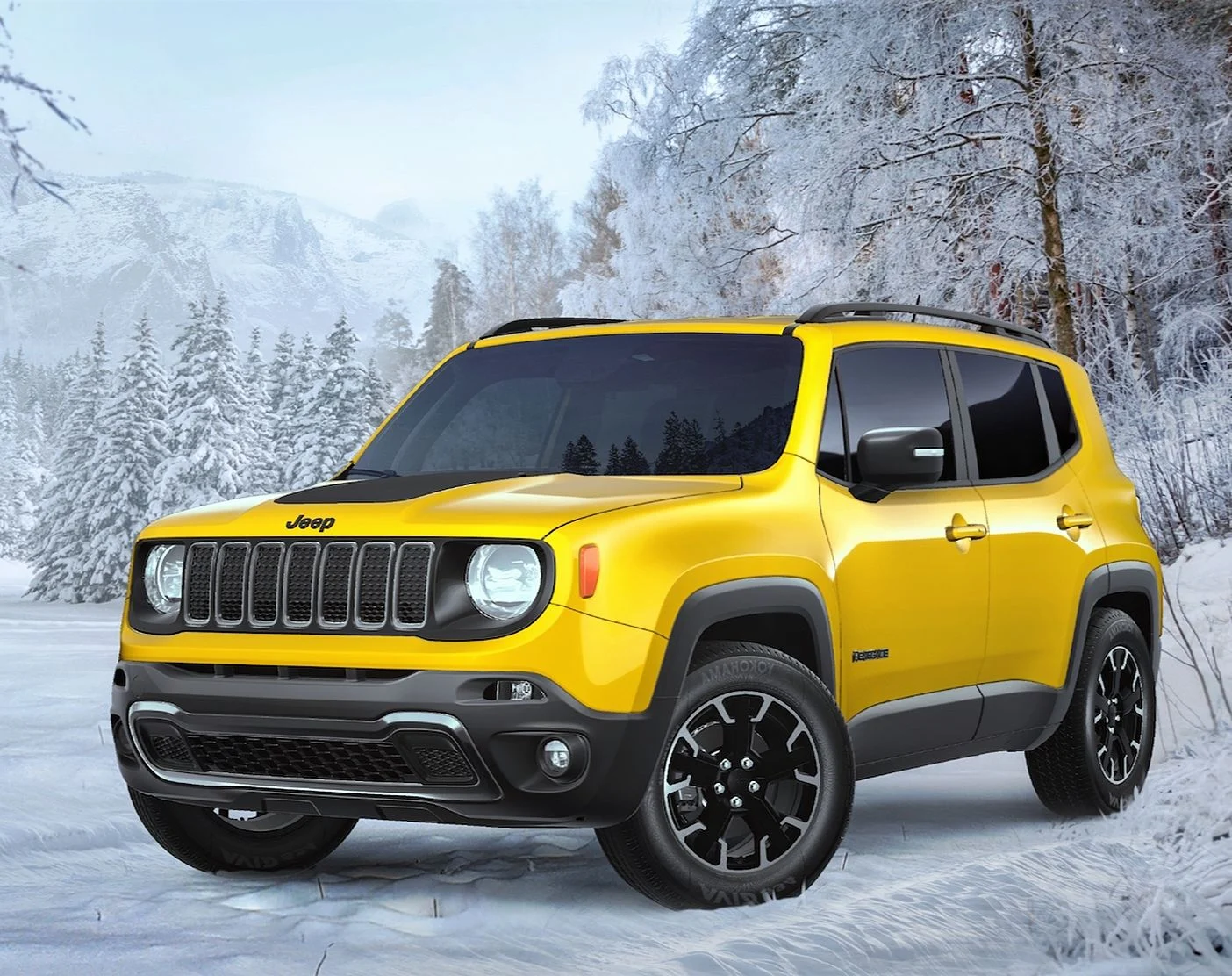When it comes to SUVs, people often focus on features like horsepower, cargo capacity, or off-road ability. But for many families, commuters, and road-trippers, legroom is just as critical—if not more so.
Whether you’re driving for hours or simply running errands with tall passengers in tow, comfort in the front and back seats can make or break the experience. A cramped SUV, no matter how capable, can quickly feel like a poor investment.
In today’s market, SUVs range from compact city crossovers to sprawling three-row giants. But not all large-looking SUVs actually provide generous passenger space, while some surprisingly efficient designs maximize interior room far better than their size suggests.
That’s why understanding legroom figures—and how they translate to real-world comfort—is key to finding the right fit.
This comparison highlights five SUVs with the most legroom, giving passengers ample space to stretch, relax, and enjoy the ride.
We’ll also examine five SUVs with the least legroom, which can feel tight and uncomfortable despite modern styling or high-tech features.
Whether you’re tall, travel often, or just want a more relaxed daily drive, knowing which models shine—or struggle—on space can help you choose wisely.
Also Read: 5 Used Cars With Zero Rod Knock Risk and 5 That Are Engine Time Bombs
5 SUVs With Most Legroom
In an era where SUVs are replacing sedans as the vehicle of choice for families, commuters, and road trip enthusiasts alike, interior space has never been more important.
Among all comfort features, legroom stands out as a top priority, especially for those who regularly share the vehicle with adult passengers or tall family members.
Long drives, stop-and-go traffic, and even short daily commutes can quickly become uncomfortable in a cramped cabin. That’s why ample legroom in both front and rear seats is a must-have for many SUV shoppers.
While some drivers focus heavily on features like all-wheel drive, infotainment systems, or fuel economy, legroom offers a more immediate and lasting form of comfort.
It affects how relaxed the driver feels on long trips, how happy kids and adults are in the back seat, and how easy it is to enter, exit, or install child seats. And for taller individuals, just a few extra inches can mean the difference between a pleasant ride and persistent discomfort.
This list of five SUVs with the most legroom covers a variety of styles and sizes—from midsize two-row crossovers to expansive three-row models—showing that you don’t always need to buy the biggest vehicle to enjoy serious interior space.
The selections here are based on measured legroom figures for both the front and second rows, paired with practical considerations like overall cabin layout, seat comfort, and adjustability.
Whether you’re driving solo, chauffeuring coworkers, or hauling a growing family, these SUVs stand out for their ability to maximize passenger space without compromising performance or utility.
They’re ideal for people who spend a lot of time behind the wheel—or in the back seat—and value stretch-out room as much as features or design.
Let’s explore the five models that offer exceptional legroom for comfort without compromise.
1. Hyundai Palisade — Class-Leading Comfort With Room to Spare
The Hyundai Palisade has quickly made a name for itself in the midsize SUV market thanks to its upscale design, thoughtful features, and, most importantly for our topic—abundant legroom.
With 44.1 inches of front legroom and 42.4 inches in the second row, the Palisade offers space on par with or better than many full-size SUVs. This generous layout makes it one of the most comfortable and family-friendly options available today.
What makes the Palisade stand out isn’t just its raw measurements—it’s how effectively that space is used. Hyundai’s design team has optimized seat positioning, floor height, and center console spacing to make the cabin feel open and airy.
Second-row passengers in particular enjoy exceptional stretch-out room, whether they’re riding in the standard bench or the available captain’s chairs.
Even third-row passengers, often an afterthought in many three-row SUVs, aren’t left behind. With a reasonable 31.4 inches of legroom, the Palisade provides enough space for adults to ride comfortably for shorter trips—a rare feat in this segment.
Rear seat access is made easy with power-folding second-row seats and wide rear door openings.
Interior materials and seat cushioning add to the premium experience, especially in higher trims like the Calligraphy.
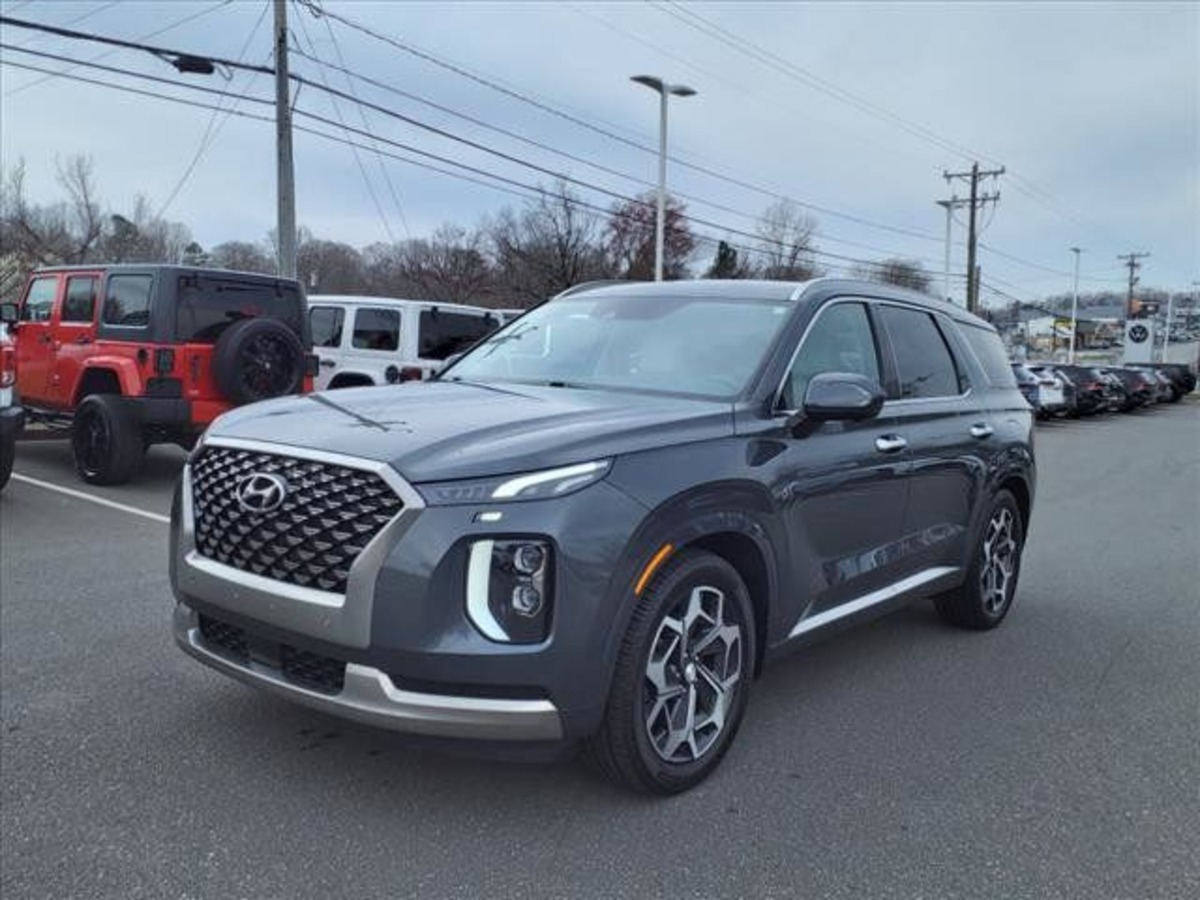
Soft-touch surfaces, ambient lighting, and available heated and ventilated seats in both the first and second rows help reinforce the Palisade’s reputation as a comfort-focused SUV.
On top of its legroom credentials, the Palisade also offers a quiet ride, a smooth suspension, and modern infotainment options that help reduce driver fatigue and passenger boredom during long journeys.
For families, professionals, and road-trippers who prioritize passenger comfort above all else, the Hyundai Palisade delivers an exceptional balance of size, functionality, and comfort.
Its best-in-class second-row legroom makes it a clear winner for those who need to keep everyone relaxed—no matter how long the drive.
2. Volkswagen Atlas — Boxy Dimensions, Exceptional Legroom
The Volkswagen Atlas doesn’t try to hide its size—and that’s exactly why it excels when it comes to legroom.
With its straight-edged, squared-off design, the Atlas prioritizes interior space over sleek curves, resulting in one of the most spacious cabins in the midsize three-row SUV segment.
It offers 41.7 inches of front legroom and a remarkable 37.6 inches of second-row legroom, making it a top pick for families and tall passengers.
What sets the Atlas apart is its ability to comfortably seat adults in all three rows, a rare strength in this class.
The second row is incredibly accommodating—even for those over six feet tall—and it slides fore and aft, allowing passengers to customize their space or give extra room to those in the third row.
Speaking of the third row, it offers 33.7 inches of legroom, which is more than many competitors and enough for adults to ride without feeling cramped on shorter trips.
The Atlas also benefits from wide-opening rear doors, making entry and exit effortless. This is especially helpful for loading child seats or assisting elderly passengers. The large windows and high roofline create an open, airy feel, enhancing the sense of space and visibility.
Up front, the seats are generously sized, with lots of headroom and legroom for even the tallest drivers. The dashboard design is clean and functional, and while interior materials aren’t quite luxury-grade, they are durable and easy to maintain, which is ideal for family use.
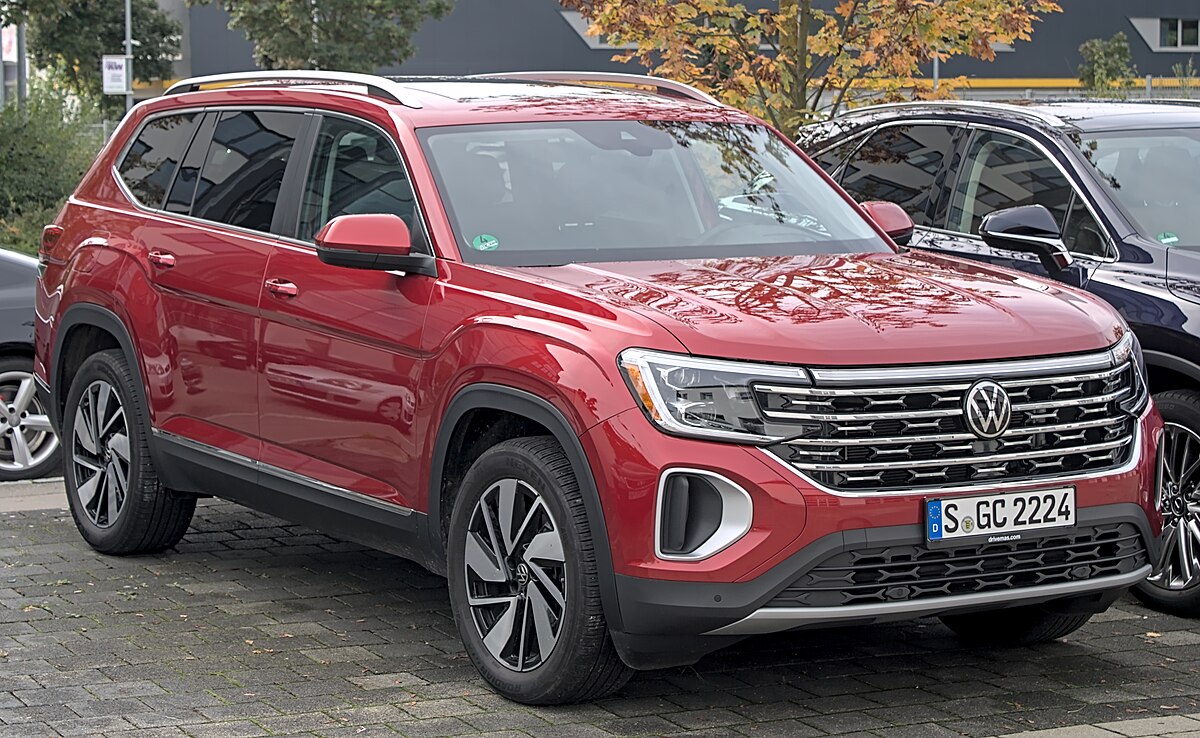
Another advantage of the Atlas is its flat floor in the second row—no intrusive hump in the middle—which makes the center seat far more usable than in many rivals. Combined with its spacious layout, this makes it a strong choice for carpools or large families.
Overall, the Volkswagen Atlas is a no-nonsense SUV that delivers serious space where it matters most. If your priority is maximizing legroom for every row of passengers—without stepping up to a full-size SUV—the Atlas stands tall as a versatile, roomy, and practical choice.
3. Kia Telluride — Stylish Design With Generous Passenger Space
The Kia Telluride has earned widespread acclaim for its winning combination of upscale styling, high-end features, and exceptional interior space.
It’s not just one of the most attractive midsize SUVs on the market—it’s also one of the roomiest, offering 44.1 inches of front legroom and 42.4 inches in the second row, identical to its corporate cousin, the Hyundai Palisade.
What makes the Telluride a standout in terms of legroom is its clever cabin design, which prioritizes comfort and accessibility for passengers in all three rows.
In the front, even tall drivers and co-pilots will appreciate the wide seats, ample adjustability, and open-feeling dashboard that avoids a claustrophobic vibe.
In the second row, available captain’s chairs or a spacious bench seat provide limo-like accommodations, with plenty of stretch-out space and even room to cross your legs on long drives.
Unlike many three-row SUVs where the third row feels like an afterthought, the Telluride offers a usable 31.4 inches of third-row legroom—not class-leading, but enough for teens or smaller adults to ride in reasonable comfort.
Plus, the one-touch sliding second-row seats make accessing the rear much easier than in many competitors.
Interior comfort is further enhanced by high-quality materials and thoughtful details. Even base models feel upscale, with soft-touch surfaces, leather-wrapped steering wheels, and supportive seats.
Upper trims include ventilated seats, premium Nappa leather, and dual sunroofs, turning the Telluride into a true near-luxury experience—without the luxury price tag.
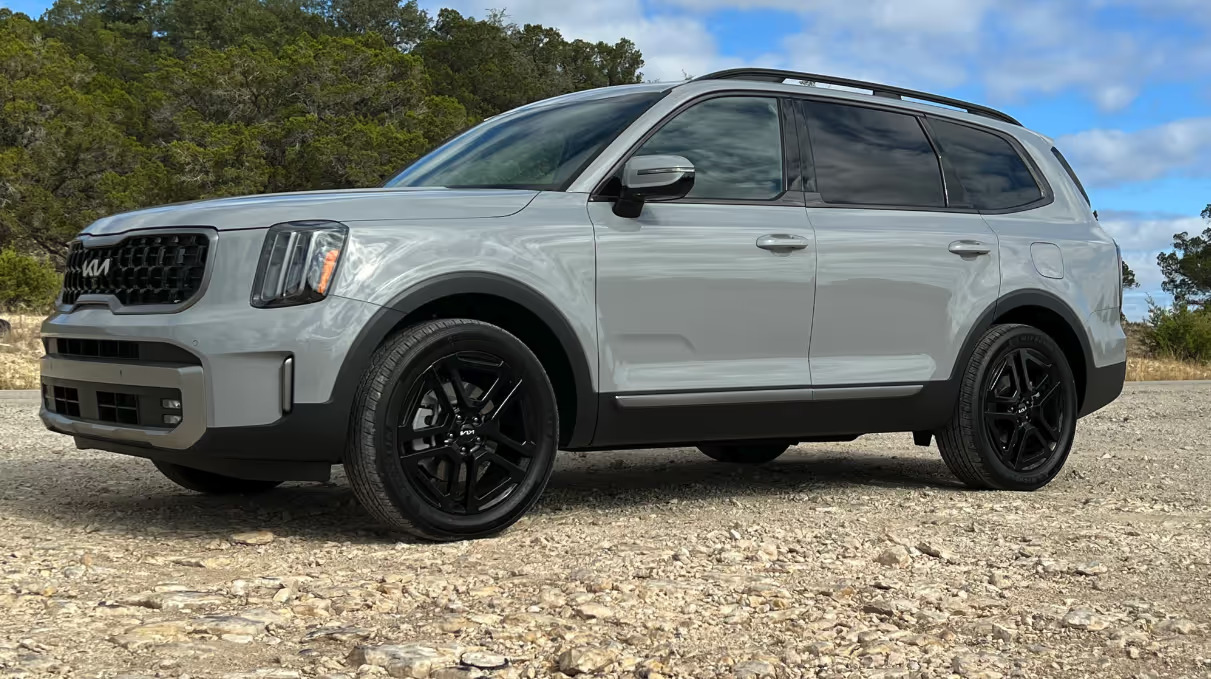
Another big win is quiet cabin dynamics. The Telluride keeps road and engine noise to a minimum, ensuring passengers enjoy not only room to stretch but also peace and quiet while they travel.
For buyers who need an SUV that can comfortably carry adults or growing teenagers in the second row without compromising cargo or third-row utility, the Kia Telluride is elegant, capable, and incredibly spacious.
It’s a rare SUV that manages to look sleek and drive smoothly while still offering class-leading legroom and everyday usability.
4. Chevrolet Traverse — Understated Looks, Overachieving Space
The Chevrolet Traverse may not always top SUV wish lists when it comes to styling or flash, but when it comes to legroom and interior space, it’s a hidden gem.
With a cavernous 41 inches of front legroom, 38.4 inches in the second row, and a class-leading 33.5 inches in the third row, the Traverse is built for buyers who prioritize passenger comfort—especially for larger families or those planning frequent long-distance travel.
Where many three-row SUVs compromise space in the back for cargo room or styling, the Traverse manages to strike a smart balance.
Its extended wheelbase and boxy proportions translate into a huge, family-friendly cabin. Even adults can sit in the third row without hunching over or folding their knees uncomfortably, a rarity in this segment.
The second-row seating is equally impressive. Whether you opt for the bench or captain’s chairs, passengers get ample hip and legroom, and the flat floor design makes the middle seat much more comfortable than in rivals with bulky center tunnels.
Rear seat passengers also benefit from wide door openings and GM’s Smart Slide system, making it easy to get in and out, even in tight parking spaces.
While the materials used in base trims are more utilitarian than premium, the Traverse makes up for it with practicality and smart layout.

Higher trims bring nicer touches like leather upholstery, panoramic sunroofs, and premium audio, but every Traverse trim offers a sense of openness and ease of movement that few midsize SUVs can match.
The cargo area is another win. Even with all three rows in use, there’s generous space for luggage or gear, making the Traverse ideal for road trips, camping excursions, or airport runs with lots of bags.
In short, the Chevrolet Traverse is one of the most spacious three-row SUVs on the market, offering genuine legroom across all rows. It’s perfect for buyers who don’t need flash but do need real-world roominess for growing families, carpools, or extended drives.
5. Toyota Grand Highlander — Big Space, Bigger Comfort
The Toyota Grand Highlander was created to answer a common complaint about the regular Highlander: not enough space.
With its extended wheelbase and re-engineered interior, the Grand Highlander offers a notable boost in legroom across all three rows, making it one of the most spacious midsize SUVs currently on the market.
It delivers 44.3 inches of front legroom, 39.5 inches in the second row, and a generous 33.5 inches in the third row—figures that rival or surpass many full-size competitors.
The Grand Highlander’s standout feature is its adult-friendly third row. Unlike in the standard Highlander, where the back row is best reserved for kids, this upgraded version accommodates adults comfortably—even on longer drives.
Tall passengers will appreciate the seat height and legroom, which eliminate the “knees-to-chest” posture common in most third-row seats.
The second row is equally generous, with plenty of space for car seats, growing teens, or even reclining passengers on long hauls.
Available captain’s chairs add even more shoulder room and personal space, while sliding adjustments allow for quick access to the rear without compromising comfort.
Up front, the Grand Highlander maintains Toyota’s focus on driver comfort and intuitive controls. The seats are wide and supportive, with easy entry and exit thanks to a slightly raised ride height and large door openings.
The dashboard layout emphasizes functionality, and materials feel upscale, especially in Limited and Platinum trims.
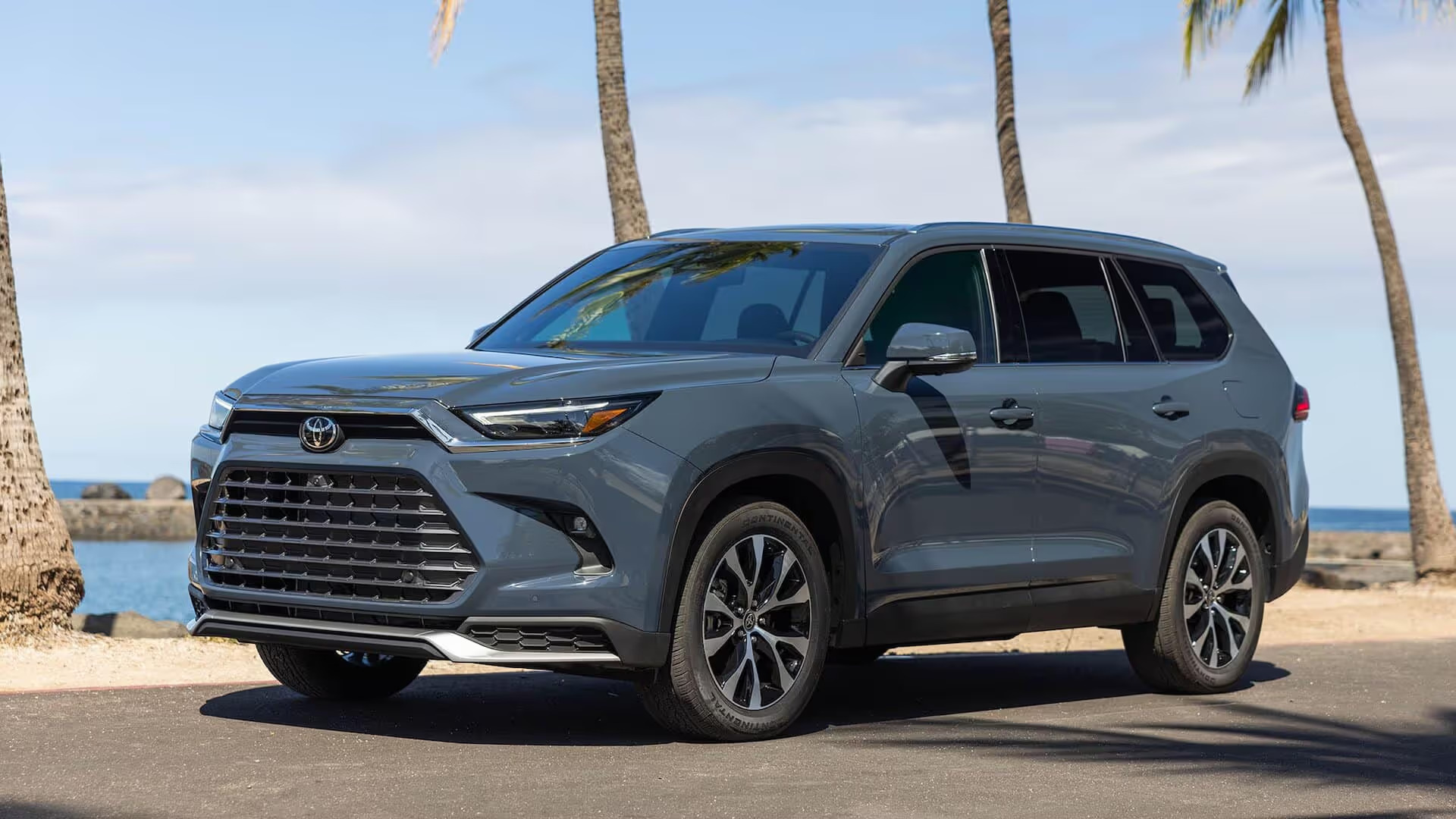
What sets the Grand Highlander apart is how it combines Toyota’s reputation for reliability with unexpected levels of interior spaciousness.
It’s not just a stretched version of the regular Highlander—it’s a reimagined vehicle built specifically for families who demand room for everyone and everything.
With its thoughtful design, excellent third-row access, and above-average cargo space even when fully loaded, the Grand Highlander stands out as one of the best options for buyers looking for maximum legroom without stepping into a full-size SUV category.
5 SUVs With the Least Legroom
While many buyers assume that all SUVs offer generous interior space, that’s far from the truth—especially when it comes to legroom. In fact, some SUVs sacrifice passenger comfort in favor of styling, compact dimensions, or cargo space.
For tall drivers, growing families, or anyone who frequently rides in the second row, limited legroom can quickly turn an appealing vehicle into a daily frustration.
In today’s crowded SUV market, even models that look large on the outside may be surprisingly tight on the inside.
Subcompact and compact SUVs often have rear legroom that rivals that of smaller sedans, and even some midsize SUVs don’t use their cabin layout efficiently.
Cramped rear seats can lead to passenger complaints, uncomfortable road trips, and challenges when installing child seats or accommodating adult passengers in the back.
In this section, we highlight five SUVs with the least legroom, focusing on real-world usability rather than just numbers.
Some of these vehicles perform well in other areas—fuel economy, tech, or price—but fall short when it comes to comfort for tall or long-legged occupants.
We look at both front and rear legroom measurements, since limited space in either row can create long-term dissatisfaction for owners.
If you’re considering a smaller SUV for urban driving or budget reasons, it’s essential to know what you’re giving up in terms of passenger space.
These five SUVs are great in some areas, but legroom isn’t their strong suit—and that can make a big difference depending on your needs.
Let’s explore the models that may fit your garage, your budget, and your lifestyle—but might not fit your legs.
1. Toyota C-HR — Edgy Design, Tight Dimensions
The Toyota C-HR is a subcompact SUV that turns heads with its coupe-like styling, bold lines, and aggressive stance. But while it excels in terms of visual flair and urban maneuverability, it falls flat in one crucial area—legroom.
With only 43.5 inches of front legroom and a cramped 31.7 inches in the rear, the C-HR ranks among the SUVs with the least usable passenger space, especially for taller individuals or families with growing children.
The C-HR was clearly designed with style-first intentions, and that focus shows in its sloped roofline and compact cabin. The rear seat legroom is particularly limiting, making it uncomfortable for most adults on longer trips.
Even teenagers and taller kids may find themselves squeezed, particularly if the front seats are pushed back.
The high window line and small rear door openings exacerbate the feeling of being cramped, and passengers may feel more like they’re riding in a sporty coupe than an SUV.
Up front, the space is more acceptable, but still not generous compared to class rivals. Taller drivers may find themselves adjusting seat positions often to find a workable driving posture, especially if they share the vehicle with shorter drivers and need frequent readjustments.
The lack of rear legroom also reduces the C-HR’s practicality for everyday tasks like installing child seats or accommodating passengers with mobility issues.
While the cargo area is decent for a subcompact, the trade-off in passenger space may not be worth it for buyers who regularly carry more than one or two people.
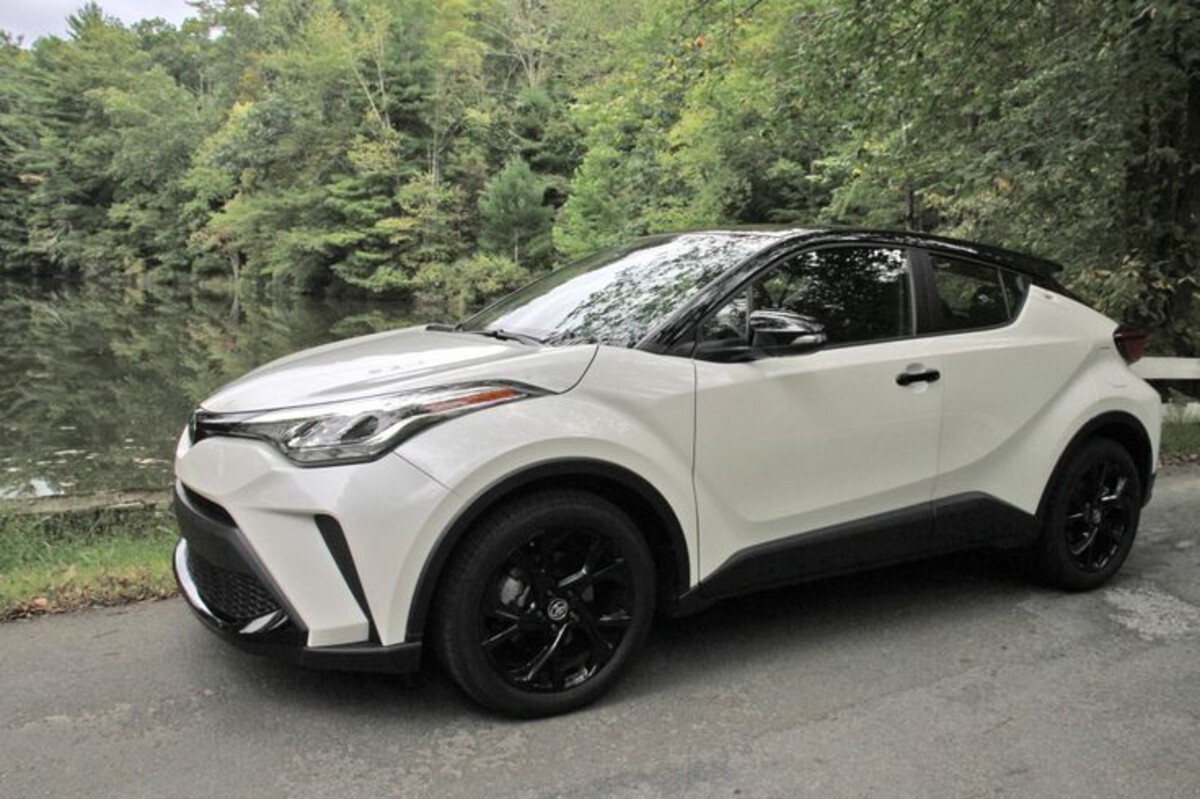
To its credit, the C-HR handles well, delivers good fuel economy, and includes a solid list of standard features for its price. But for buyers who prioritize comfort—especially for rear-seat passengers—the C-HR may prove disappointing.
Ultimately, the Toyota C-HR is a case study in form over function. Its sharp looks and compact size make it great for urban driving, but tight legroom—particularly in the second row—limits its appeal for families or taller riders.
2. Mazda CX-30 — Premium Feel, But Rear Space Is a Pinch
The Mazda CX-30 is often praised for its refined interior, engaging driving dynamics, and near-luxury feel—all packed into a compact and affordable crossover.
However, despite its upmarket ambitions, the CX-30 is let down by its tight legroom, especially in the second row. With 41.7 inches of front legroom but only 36.3 inches in the rear, it falls behind even some smaller subcompacts when it comes to true rear-seat comfort.
Front occupants will likely have few complaints—the front seats are supportive, and the materials used throughout the cabin feel high-end, particularly in upper trims.
The dashboard is minimalist and driver-focused, enhancing the sense of space up front. But that’s where the comfort story ends.
Move to the second row, and it quickly becomes apparent that rear passenger space was not a top priority in the CX-30’s design.
Tall passengers will find their knees brushing up against the front seatbacks if the front occupants have their seats positioned more than halfway back.
And because of the CX-30’s swooping roofline and narrower windows, the back seat feels even more confined than its legroom number suggests.
For families or those who regularly drive with adults or teens in the rear, this can be a real limitation. The CX-30’s small rear doors make entry and exit slightly awkward, and installing rear-facing child seats or boosters can be challenging.
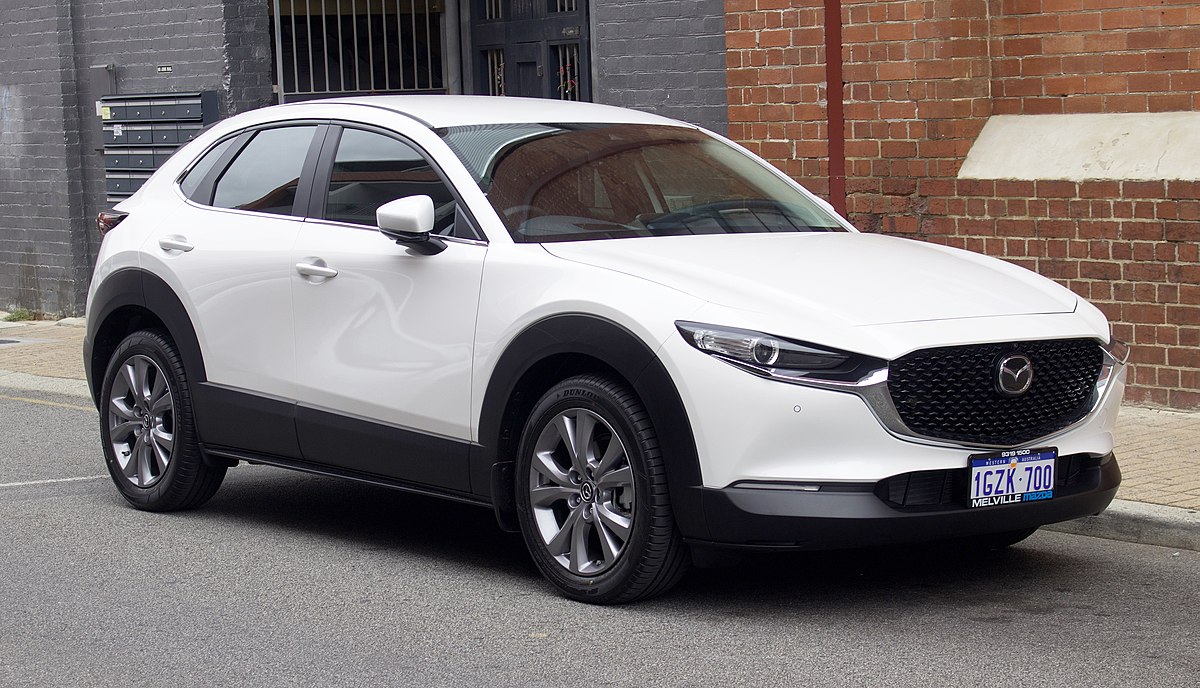
Even compared to other subcompact crossovers, like the Honda HR-V or Hyundai Kona, the CX-30 falls short in practical rear legroom.
To its credit, Mazda has created a stylish and driver-focused crossover that’s enjoyable to drive and looks more expensive than it is.
But for buyers who plan to carry more than one passenger regularly, especially on long trips, the limited legroom in the back seat could quickly become a deal-breaker.
In short, the CX-30 is perfect for singles or couples who want upscale looks and sporty handling, but less so for families or those who prioritize passenger comfort over driving feel.
3. Subaru Crosstrek — Rugged Personality, But Cramped Inside
The Subaru Crosstrek is a fan favorite for those seeking a small SUV with genuine off-road ability, standard all-wheel drive, and go-anywhere confidence.
It’s marketed toward active lifestyles, weekend getaways, and adventurous commutes. But for all its rugged charm, the Crosstrek suffers in one critical everyday area: interior legroom, particularly in the rear.
With 43.1 inches of front legroom—which is solid for the segment—the Crosstrek gives drivers and front passengers enough space to get comfortable.
However, things start to feel tight in the back, where rear-seat passengers get only 36.5 inches of legroom. While that may seem decent on paper, in real-world usage, especially with tall front-seat occupants, knee and foot space quickly become an issue for rear passengers.
Adding to the feeling of confinement is the Crosstrek’s upright, narrow interior, which prioritizes cargo and headroom more than legroom.
Though taller adults may appreciate the head clearance, their knees will likely be pressing against the seatbacks during longer rides. This makes the Crosstrek less ideal for growing families, carpooling, or long-distance travel with more than two passengers.
The situation can be even more challenging if you’re using child safety seats. Parents will find that rear-facing child seats often require the front seats to be pushed significantly forward, creating a cramped driving experience for taller adults.
The narrow cabin also means that fitting three passengers across the rear is an uncomfortable squeeze.
Despite its space limitations, the Crosstrek continues to attract buyers for its superior ground clearance, fuel economy, and winter-weather confidence.
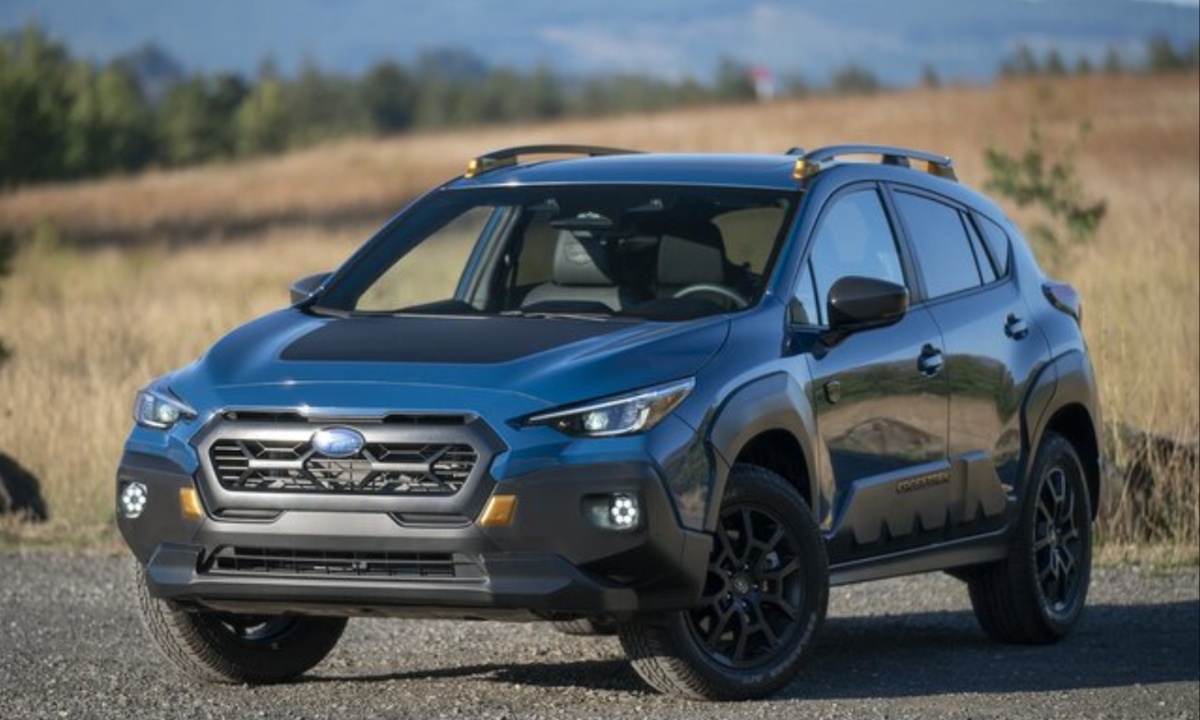
Its compact dimensions make it easy to park and maneuver in urban settings, and the cargo area is generous for a vehicle of its size.
However, if you regularly carry adult passengers or prioritize comfort on road trips, the Crosstrek’s limited rear legroom might become a source of frustration over time. It’s a great SUV for solo adventurers or couples—but less so for those needing a genuinely spacious back seat.
4. Hyundai Kona — Big on Features, Small on Space
The Hyundai Kona is a subcompact SUV that punches above its weight when it comes to tech, value, and driving fun. It offers sharp styling, a solid list of standard features, and even a performance-oriented N Line variant.
But despite its many strengths, the Kona falls short in one critical area for everyday practicality: interior legroom. With 41.5 inches of front legroom and just 35.2 inches in the rear, the Kona ranks among the tightest SUVs in its class for rear passenger space.
Up front, the Kona provides enough room for average-sized drivers and passengers to get comfortable, although taller occupants may still find the cabin a bit snug due to its narrow width and sporty design.
The seating position is relatively low for an SUV, which gives a more car-like feel but also limits leg extension and under-thigh support on longer drives.
The real pinch is in the second row. The Kona’s compact exterior dimensions translate into limited knee and foot room, especially when the front seats are adjusted rearward.
Adults in the back will find longer trips uncomfortable, and even teens or taller kids may start to complain. The sloping roofline also compromises headroom, making the rear feel more confined than the numbers suggest.
Practical concerns extend to families as well. Installing a rear-facing child seat in the Kona often forces the front passenger seat uncomfortably forward, limiting its usability. And with narrow rear door openings, getting in and out can be awkward for both kids and adults.
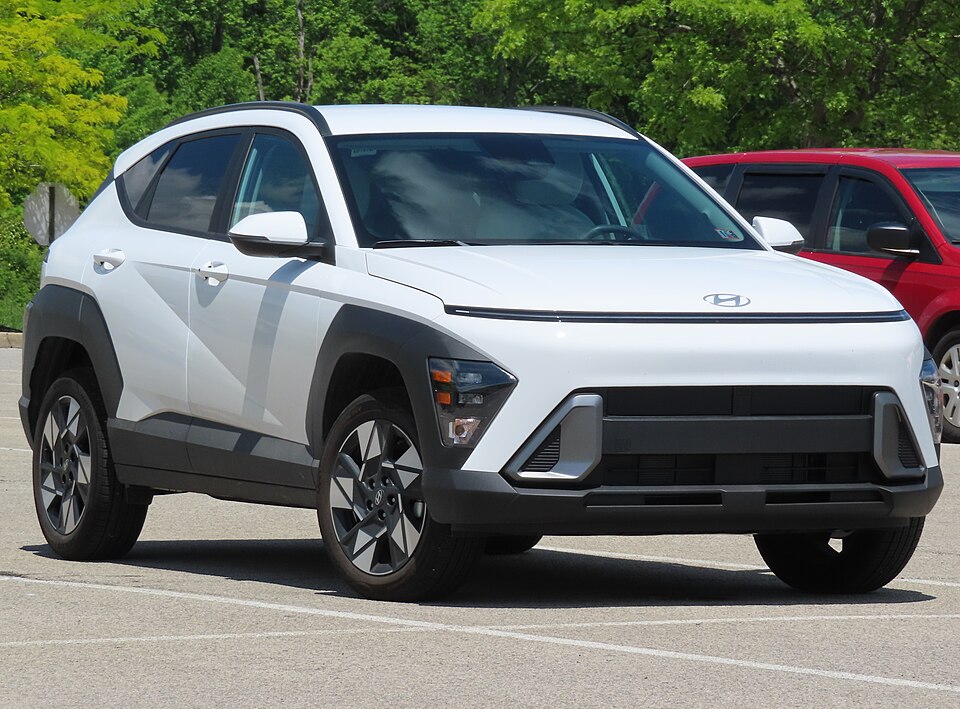
To its credit, the Kona offers excellent infotainment, a peppy driving experience, and great fuel efficiency—all reasons why it’s a popular pick among younger buyers and city dwellers.
However, those who frequently carry passengers in the back seat or want a more comfortable road trip experience should consider roomier alternatives in the same price range.
In summary, the Hyundai Kona is a stylish, tech-savvy SUV that excels in urban settings—but its cramped second row makes it less appealing for families, taller drivers, or frequent group travel.
5. Jeep Renegade — Off-Road Image, On-Road Space Constraints
The Jeep Renegade stands out in the subcompact SUV class for its rugged design, playful personality, and genuine off-road capabilities—especially in Trailhawk trim.
It brings signature Jeep styling and attitude to a smaller platform, making it a go-to option for drivers who want adventure-ready flair in a city-friendly size.
However, one area where the Renegade disappoints is interior legroom, with 41.2 inches in the front and a restrictive 35.1 inches in the rear.
From the outside, the Renegade looks boxy and upright—traits that would usually suggest a spacious cabin.
But inside, passenger space is surprisingly tight, particularly in the back seat. Despite the high roof and large windows that create a bright atmosphere, legroom is at a premium for rear-seat occupants.
Even moderately tall passengers will find their knees brushing the front seats if they’re adjusted far back, and there’s minimal foot space to slide under the seats ahead.
Front passengers fare better, with decent room to stretch out and supportive, upright seating. However, taller drivers may find themselves wishing for more leg extension on longer drives, especially since the front seats don’t travel as far back as in some rivals.
Rear-seat access is easy thanks to the Renegade’s tall profile and wide-opening doors, but comfort once inside is lacking.
This makes the vehicle less ideal for families or those who regularly travel with adult passengers. The situation worsens if child safety seats are involved, as their bulk further limits front-row adjustability.
Cargo space is fair for the class, and the Renegade does retain its appeal as a fun, off-road-capable urban runabout. It’s also well-equipped in terms of tech and safety features, which adds to its city-friendly utility.
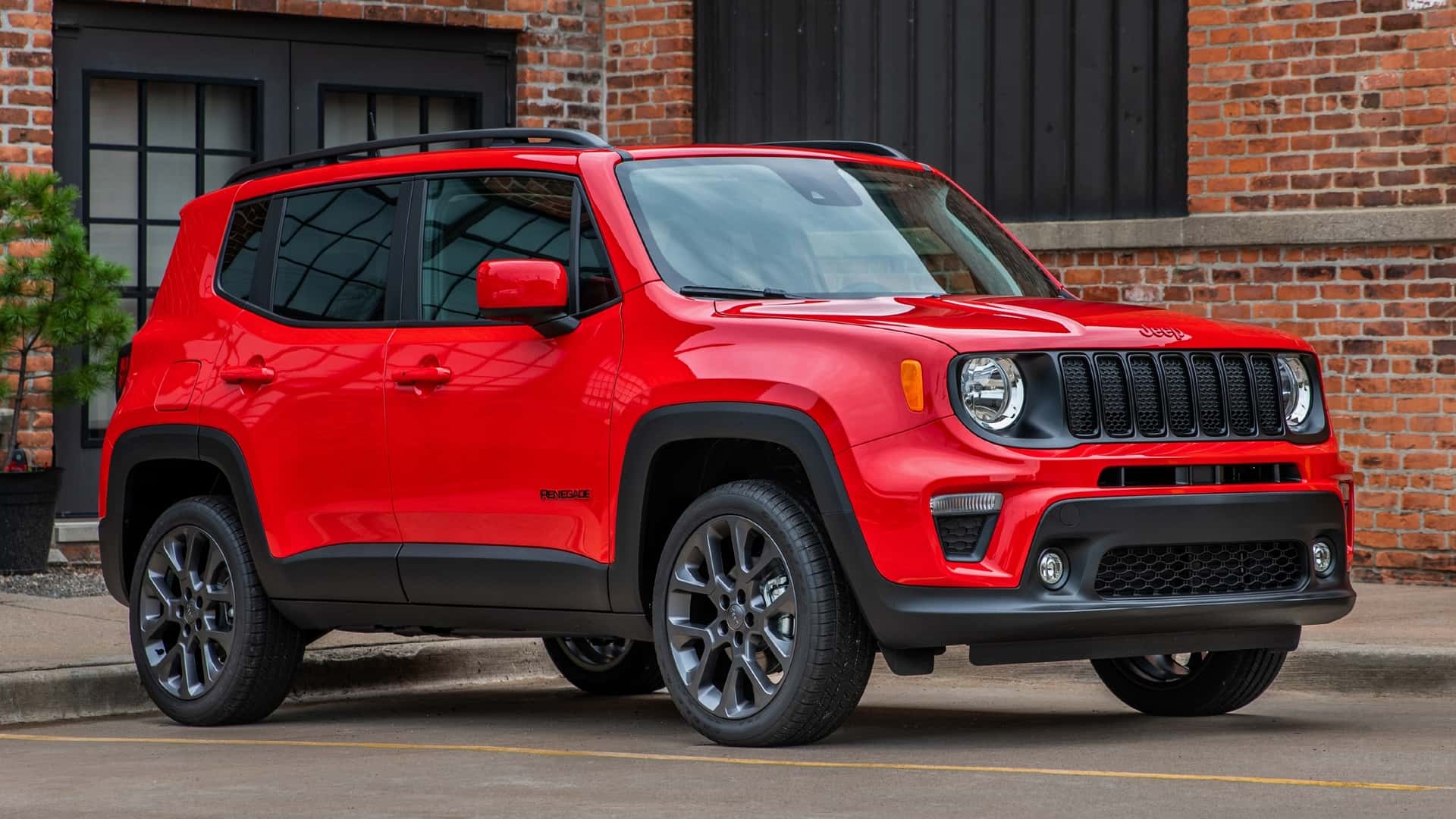
But for buyers who need usable passenger space—especially in the second row—the Renegade’s cramped rear legroom is a significant compromise.
In short, the Jeep Renegade is a strong contender for style, maneuverability, and trail-readiness.
But when it comes to daily driving comfort—especially for backseat riders—it falls short, making it better suited for solo adventurers than families or frequent group outings.
In the fast-growing and diverse SUV market, shoppers are spoiled for choice—offering everything from rugged trail machines to family-friendly road trip champions.
But one factor that often gets overshadowed by features, performance, or price is legroom—and as we’ve seen, it plays a crucial role in daily usability and long-term satisfaction.
The five SUVs with the most legroom—including the Hyundai Palisade, Volkswagen Atlas, Kia Telluride, Chevrolet Traverse, and Toyota Grand Highlander—showcase how thoughtful interior design can elevate the driving and riding experience for everyone.
These models succeed not just by offering impressive numbers on paper, but by translating those inches into real-world comfort.
They’re ideal for growing families, frequent travelers, and taller individuals who need genuine space to stretch out, whether in the front seat or the third row.
On the other end of the spectrum, the five SUVs with the least legroom—Toyota C-HR, Mazda CX-30, Subaru Crosstrek, Hyundai Kona, and Jeep Renegade—reveal the compromises that can come with choosing a smaller or more style-focused vehicle.
While each has its strengths in other areas (like fuel economy, maneuverability, or off-road charm), they often sacrifice rear-seat space, making them less suitable for families, long-distance comfort, or those who frequently carry passengers.
Legroom might not grab attention on the spec sheet like horsepower or touchscreen size, but it becomes a daily issue if it’s lacking. A few inches can be the difference between a relaxed commute and a cramped struggle, especially for second-row riders or when fitting child seats.
Ultimately, SUV buyers should weigh their needs carefully. If your lifestyle involves frequent carpooling, long trips, or transporting adults or teens in the rear seats, prioritize models with proven spaciousness and smart interior layouts.
But if you’re a solo driver in the city or prioritize agility and fuel savings over comfort, a smaller SUV might be just right.
In the end, comfort isn’t a luxury—it’s a necessity, and legroom is one of its clearest indicators. Choosing an SUV with the right interior dimensions ensures that everyone—driver and passengers alike—enjoys the ride, not just endures it.
Also Read: 5 Used Cars With Zero Rod Knock Risk and 5 That Are Engine Time Bombs

